Last updated:
Refereed articles
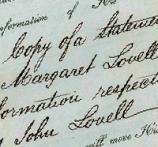
A historic and a modern search
Expand SummaryThis article concerns two attempts to trace Giuseppe (or Joseph) Azzopardi, a Maltese man who murdered a Dutch woman in Smyrna (now Izmir) in Turkey in 1842. The first search was instigated in Malta by his wife Concetta in 1857 after he had been tried in England and transported for life to the Australian colonies.This search by nineteenth-century authorities was unsuccessful. The second search was undertaken by the author in 2010, who became curious about the case as a by-product of other research. This second attempt pushed the story further by establishing that Azzopardi had moved to the Victorian goldfields and remarried, but then he disappears again.
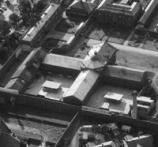
Archaeological Investigations of Prisoner Burials at the Old Melbourne Gaol and Pentridge Prison
Expand SummaryThis paper presents the results of archaeological investigations and historical research into the burials of all prisoners executed in Melbourne from 1880 onwards. Over the past fifty years the knowledge of the location of these prisoner burial sites had become confused or forgotten, and was not accurately represented in official records. Much of the confusion dates back to 1929 when, following the closure of the Old Melbourne Gaol, approximately thirty burials were exhumed and the remains relocated to Pentridge in chaotic circumstances.
Recent archaeological excavations at the Old Melbourne Gaol and former Pentridge prison have done much to disentangle the complex history of the prisoner burials and it can now be reported that all burial sites at the Old Melbourne Gaol and former Pentridge prison from 1880 onwards have been located.
This paper was written prior to 1 September 2011, when the Victorian Institute of Forensic Medicine announced the results of its DNA analysis of Pentridge remains. These remarkable findings are included here as a Postscript.
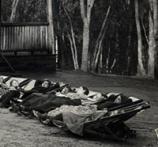
The Blackburn Open Air School
Expand SummaryThe European pioneers of the open-air school movement believed exposure to fresh air, healthy food, exercise and being taught outdoors could prevent the onset of tuberculosis in children. Australia’s first open-air school was established in semi-rural Blackburn in 1915, its students drawn from industrial Richmond. This paper explores the relationship between social and racial concerns and pedagogic ideas in the first half of the twentieth century and argues that the ideals of the open-air movement were adapted to suit local conditions in Victoria.
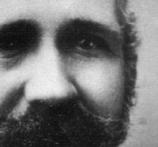
A micro-level study of Baulkamaugh and Katunga, 1877-1955
Expand SummaryThis paper examines settlement patterns and landscape changes in the parishes of Baulkamaugh and Katunga on the northern plains of Victoria. The memoir of one settler, John Sweeney, provides a first-hand account of the problems faced by selectors under the Land Act 1869, and a general picture of environmental changes is drawn from the selection files of his neighbours. Sweeney also provides a rare personal insight into how settlers learnt to farm on the northern plains in the late nineteenth century. The paper argues that farmers in Baulkamaugh and Katunga had developed a stable system of broad-acre farming by the first decade of the twentieth century. Parish-level statistics show that this system survived into the middle of the twentieth century and was only dismantled by government plans to introduce irrigated agriculture in the 1950s.
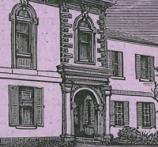
Doctors, Drunkards and Victoria's Committee of Inquiry 1901
Expand SummaryDuring the latter half of the nineteenth century, in Britain, North America and the Australian colonies, a dramatic change occurred in the way in which habitual drunkenness was understood. Having long been regarded as a sin or a vice, habitual drunkenness was gradually recast as a disease, one requiring specialist treatment if its sufferers were to have any hope at all of being cured. This article considers how the debate over drunkenness and its treatment played out in Victoria. In particular, it focuses upon the formation and work of a committee which in 1901 was appointed to investigate and test the merits of various ‘alleged cures’. As its proceedings demonstrate, exactly what was to be involved in the treatment of inebriates was a matter of heated dispute. Contributions to the committee provide us with insights into the varying questions, views and issues involved in the debate and moreover highlight, often poignantly, the vulnerability of those who sought to be cured.
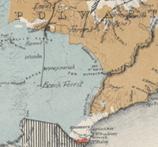
Taking up a selection under Land Act 1884
Expand SummaryLand selection took place in Victoria under different rules and regulations throughout the nineteenth and early twentieth centuries. A few settlers entered the forests of the Otways under the Land Act 1869, but the first large wave went in under Land Act 1884, when allotments were selected from pre-survey maps prepared by the Lands Department. Unfortunately there was so little survey data available and the terrain was so rough that for decades it was impossible to produce accurate maps. This article argues that changes in the process of settlement between the earlier Acts and the Land Act 1884 led to misunderstandings which, along with the inaccurate and misleading maps, resulted in high levels of failure amongst the earliest Otway selectors.
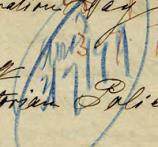
An examination of applicants to join the hunt for the Kelly gang in 1879
Expand SummaryThe offer of an £8000 reward in 1879 for the capture or destruction of the Kelly gang drew numerous applications to join the hunt from ex‑police and others, many of whom were seeking employment, and a surfeit of schemes to effect a capture. Letters to the police during that year are examined in some detail. The reward, although eventually paid, failed in its primary objective and it is contended that it may have been detrimental to police efforts to apprehend the gang through the use of informers.
Forum articles
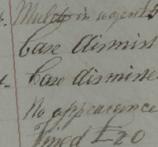
Early Colac Court Records in the United States of America
Expand SummaryThis article examines a volume of Colac court records from the mid-nineteenth century now held in the United States. It details the contents of the volume with an eye towards the nature of local justice in early Victoria and the ways in which legal records can provide a window into the past. In addition, the article calls attention to the increasingly global nature of local history studies. In sharing the story of this trans-oceanic ‘discovery’ and its subsequent digitisation, it provides a possible model for future directions in archival research.
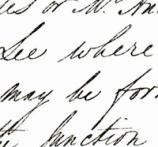
Evan Jenkins in The golden chain: a history of Sebastopol claims that the first store in inland Victoria was built at the Round Water Holes near Sebastopol, now a suburb of Ballarat. This statement is a repetition of an 1870 claim by historian William Withers. However, when researching the area for my history of Ross Creek, I realised that some confusion had arisen between the 1840 business of Campbell and Woolley and the 1860s store of Isaac Pike, which was definitely at the Round Water Holes site. Correspondence in PROV series VPRS 19/P0 confirms that the historic 1840 store was not established at the Round Water Holes, but was built at a junction on the Buninyong road. The story of the store provides an interesting insight into the district near Buninyong in the pre‑gold era.
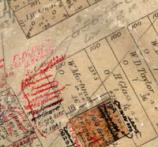
The narrow laneways that wind their way throughout Melbourne’s CBD have become icons of the city’s rich culture and history. But how did laneways appear in the city in the first place and what can they tell us about its past? Using PROV’s extensive collection of rate books, Sands and McDougall directories and building applications, this article examines the history and heritage of Melbourne’s ‘little’ streets through an in-depth study of one particular inner-city laneway. Little Latrobe Street was not included in the original city grid, but appeared in 1851 during the Victorian gold rush population boom. The article examines what remains of Little Latrobe Street’s history today and argues that Melbourne’s laneways are a unique feature of the city and deserving of heritage protection.
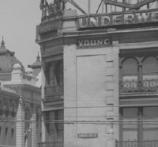
Thomas Joshua Jackson was the lesser known of the Irish cousins (the other being Henry Figsby Young) who managed Melbourne’s Princes Bridge Hotel, on the corner of Swanston Street across from Flinders Street station, from 1875. The hotel became known as ‘Young and Jackson’s’, and has since been frequented by hundreds of thousands of Melburnians and visitors alike. A somewhat enigmatic figure, about ten years older than his better‑known cousin HF Young, Jackson did not seek public office or become an especially prominent businessman. He left no letters, diaries or public speeches on record. He married late and had no children. Upon his death in 1901, his most public mark was as a partner of Young; his most visible legacy is his Jolimont Road terrace house in East Melbourne, called Eblana. Much of what we do know of Jackson’s life is found in the files of Public Record Office Victoria (PROV).
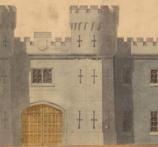
In the first few months of 2010, a team of PROV staff members worked to prepare a permanent exhibition of PROV records at the Old Treasury Building in Spring Street, Melbourne. Victorian Archival Treasures opened on 6 June 2010 and has since been complemented by temporary displays using additional records from PROV’s collections. Kimberley Meagher and Jill Barnard, members of the exhibition team, reflect on the exhibition process and explore some of the personal highlights and challenges involved in using PROV records in an exhibition.
Material in the Public Record Office Victoria archival collection contains words and descriptions that reflect attitudes and government policies at different times which may be insensitive and upsetting
Aboriginal and Torres Strait Islander Peoples should be aware the collection and website may contain images, voices and names of deceased persons.
PROV provides advice to researchers wishing to access, publish or re-use records about Aboriginal Peoples
